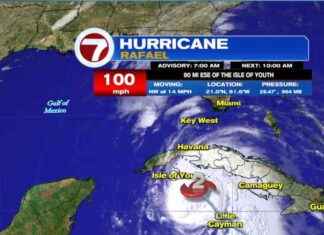In 1995, at the same time that some British promoters were engaged in the possibility of organizing a music festival to celebrate the 25th anniversary of the last of the three editions of the famous festival on the Isle of Wight, a small group of Spanish music lovers put which for many years would be something like the flagship of the summer musical macro-festivals in these latitudes: the Benicàssim International Festival (FIB), an event that was born with a special fondness for the British and that in a few years would become a mecca for so-called indie music, also for fans from the UK.
In a way, the history of the FIB is also the history of that music, indie, whatever that word has meant musically in the last quarter of a century. (Perhaps a good way to get an idea is to take a look at some of the groups that, back in 1995, were part of the festival’s poster: on the Hispanic side, Los Planetas, Australian Blonde, Mr. Chinarro or La Buena Vida; by the British, The Charlatans, Supergrass or The Wedding Present. The profile of the festival is also drawn by the origin of its promoters: the brothers José and Miguel Morán, managers at that time of the Maravillas de Madrid, or Luis Calvo and Joako Ezpeleta, two names linked to the Elefant Records label and the mythical radio program Viaje a los sueños polares.A concert hall, a record publisher and a radio showcase that gave a good account of the current status of what was already known as indie ).
The history of the FIB can be traced above all in a multitude of chronicles published in the press (newspapers, specialized magazines…) from its launch until today, a history full of great moments and also moments of anxiety. To illuminate both one and the other, it is now possible to turn to a new source, the book I lived here, subtitled An emotional chronicle of my 25 years at the FIB, and signed by Joan Vich Montaner (Palma, 1972). A story whose interest lies above all in being told from within, since the author worked at the festival from its first edition until 2019, the last one before the covid break.
In his twenty-five years as an intrinsic part of the FIB, Vich Montaner has experienced it from different perspectives, from first taking care of one of the festival’s drinks bars to ending up as co-director of the event in charge of hiring artists, tasks that throughout Over the years he has been combining with others such as playing himself as a musician in various groups, dedicating himself to music journalism or working as a manager for other artists. But despite his knowledge of this meeting that every year brings thousands of fans to the town of Castellón, he does not offer a detailed account of the history of the FIB, full of figures of attendees, lists of participating artists or long explanations of the operation of a festival of the magnitude of Benicàssim. Vich Montaner’s is, as the author says from the very beginning, an “emotional chronicle”. Which, on the other hand, does not invalidate it as a portrait of one of the most outstanding musical events of recent decades in Europe.
Starting from the anecdote, the book gradually builds an overall portrait of what the FIB has been up to now, a portrait that is both of a cultural movement –what we call indie–, of some of its protagonists principals and also of its many followers, those thousands of young people –many British– who year after year crowded together for three or four days in a small town on the Mediterranean coast to have a good time based on music, sun and beach.
From his emotional perspective, Vich Montaner has been able to build an entertaining story, even with quite a bit of humor, in which he discovers his likes and dislikes; a story that above all conveys her passion for music, for that music that is also what brings fans to the FIB. A story that is wanted without nostalgia –and without epic– but that does not stop transmitting emotion and enthusiasm for having participated in the festival for a quarter of a century, an emotion that is surely what can connect the author with the readers of the book. , especially if these have also been fibers (which is how festival goers know each other).
Today the FIB does not seem to be at its best, having gone through a new change of owners (and a pandemic). It is enough to take a look at the poster and compare it with editions of its most brilliant years. But music is also different today and the indie that gave it life is above all history. Of the festivals born in those early nineties, only Sónar is still alive. Many others are either younger or have fallen by the wayside, often victims of a saturation of the festival phenomenon and of fierce competition between them. But who knows, maybe in twenty-five years someone will write another FIB chronicle.








